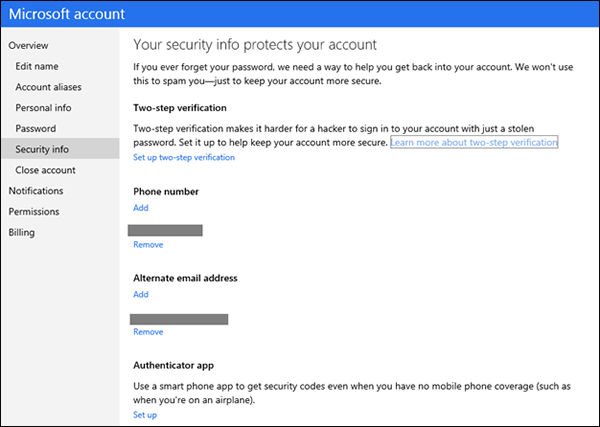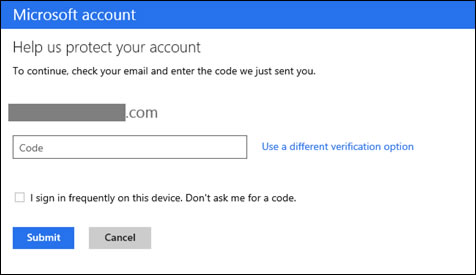Two-factor authentication or two-step verification, whatever you call it is a security layer that can be added to secure your online accounts. Several companies recently started adding this feature to protect their users online accounts, for example Google, Dropbox and more. Two-step authentication adds an extra layer of security, for example along with the password you also need a second authentication code that can be sent through a text message to your mobile phones. Once this is enabled if a hacker having your password is not enough to access your account he also need a code that is sent to your mobile phone as a text message. That way you can prevent unauthorized access to your online accounts.

Microsoft is adding two-step verification to Microsoft account that effects all the services that are accessed using a Microsoft account, for example, Windows PC, Windows Phone, SkyDrive, Skype, Outlook.com and more. You can enable this feature from here https://account.live.com/proofs/Manage, if you don’t see this option don’t worry it might take a couple of days before it reaches you as Microsoft is rolling this gradually to all the users.
The two-step verification step is optional and includes a security step where you need a code sent to your mobile phone or email along with the account password to login. Although this is optional users are encouraged to enable this feature to secure their online accounts.
If you are a Windows Phone user you can download the Microsoft Authenticator app. The app works even when you are offline, and you can also use this app to generate codes for other sites like Google and Dropbox. If you are not a Windows user Microsoft suggests you to use other authenticator apps but doesn’t recommend one.

On devices you use regularly like your home computer or mobile phone there is no point in entering two-step verification every time you login, for these devices you can disable the security codes. If you don’t use this device for 60 days Microsoft will start displaying security code.
Via Microsoft Blog
